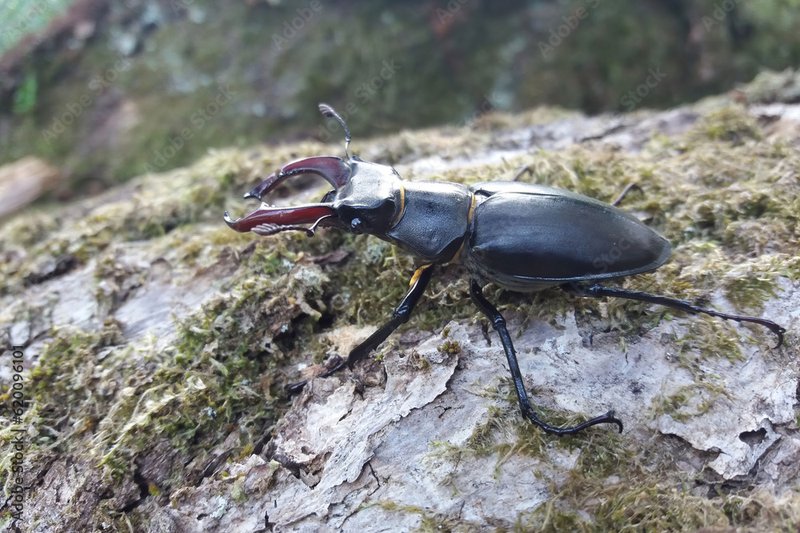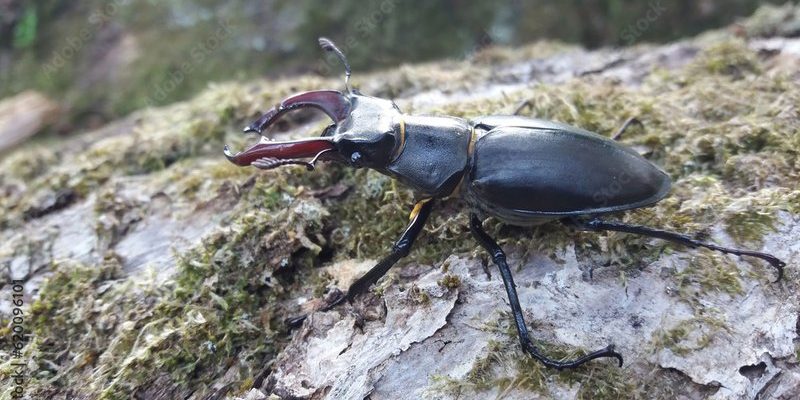
Imagine climate change as a giant weight that gradually presses down on the natural world, making it harder for certain species to thrive. For stag beetles, this means they must navigate the shifting landscapes of temperature, habitat, and food availability. Let me walk you through how these magnificent insects are responding to the ever-changing climate and what it means for their future.
What Are Stag Beetles?
Stag beetles belong to the family Lucanidae and are known for their remarkable size and shape. With males often sporting impressive mandibles that resemble antlers, these beetles can be quite the eye-catcher—picturesque to say the least. You might even spot them during warm summer nights, as they’re attracted to lights.
These beetles have a particular love for decaying wood, which is where they lay their eggs and find nourishment. The larvae live in decaying wood for several years before reaching adulthood. So, when we talk about stag beetles, it’s crucial to understand that their life cycle is deeply tied to their environment—and this environment is changing.
Climate Change: What’s Happening?
Climate change refers to the long-term alteration of temperature and typical weather patterns in a place. To put it simply, it’s making some areas hotter and others wetter, which can disrupt countless species, including our stag beetles.
Rising temperatures can negatively affect stag beetles in numerous ways. For starters, if it’s too hot, their breeding cycle can be thrown off. Beetles depend on specific temperature ranges for their eggs to develop. If those ranges shift, fewer beetles will make it to adulthood.
Moreover, changing rainfall patterns can also impact the decaying wood that larvae need to thrive. If it becomes too dry or too wet, the wood can break down differently, altering the food source for these insects.
Habitat Loss and Fragmentation
As climate change impacts the environment, habitat loss becomes a significant concern for stag beetles. Urbanization, agricultural expansion, and deforestation are all consequences of a warming world. These activities destroy the natural habitats stag beetles rely on.
When we think about stag beetles, it’s important to remember their need for large, undisturbed areas filled with old trees. Unfortunately, as forests are cut down for development, beetles might find themselves stuck in small patches of woods that aren’t enough to sustain a healthy population.
This fragmentation can lead to isolation, which means that different stag beetle populations can’t mingle or reproduce effectively. If they can’t find mates or their food sources diminish, their numbers will likely drop.
Temperature Sensitivity
Stag beetles are sensitive to temperature fluctuations. Here’s the thing: when the temperature rises, it not only affects their reproductive success but can also disrupt their daily activities. For instance, they are primarily nocturnal and prefer cooler evenings to forage for food and mates. A hotter climate could mean they are active during the day, exposing them to predators and dangerously high temperatures.
This sensitivity to temperature also poses problems for their larvae. If the wood they inhabit becomes too warm or dry, it can impair their growth. Essentially, the comfort zone for stag beetles is narrowing, which could lead to significant population declines.
Food Resource Challenges
Stag beetles feed primarily on the sap of dying trees and decaying wood. So, shifting weather patterns can impact the availability of these food sources. If warmer climates result in fewer trees or changes in tree health, stag beetles could struggle to find adequate nutrition.
For example, suppose a tree becomes sick due to increased temperatures or pressures from pests. In that case, the beetles may lose a vital food source, which could jeopardize their survival. Picture yourself on a long road trip with only a sparse supply of snacks—it’s not an ideal situation. That’s how stag beetles feel when their food resources dwindle.
Conservation Efforts for Stag Beetles
Given the threats posed by climate change, conservation efforts are crucial for protecting stag beetles. It starts with raising awareness about their plight. Schools, local communities, and conservation groups can play a vital role in educating people about the importance of these insects.
Creating suitable habitats is another essential step. Planting native trees and preserving existing woodlands can offer safe spaces for stag beetles. You might even consider leaving decaying wood in your backyard to help support local stag beetle populations. Small actions can lead to significant changes.
How You Can Help
Every one of us can make a difference when it comes to protecting stag beetles and their habitats. Here are some simple ways you can help:
- Support Local Conservation Groups: Get involved with or donate to organizations that focus on insect conservation.
- Plant Native Species: Consider planting trees and flowers that provide habitats for various insects.
- Educate Others: Share information about stag beetles and climate change with friends and family to spread awareness.
- Reduce Your Carbon Footprint: Simple changes in your daily life can contribute to combating climate change overall.
The impact of climate change on the stag beetle is a reminder that the delicate balance of our ecosystem is continuously shifting. From changes in temperature to habitat loss, these magnificent insects face real challenges that could threaten their survival. But there’s hope. Together, through awareness and action, we can support stag beetles and other affected species.
So, let’s remember that every small effort counts. By making informed choices and supporting conservation initiatives, we can help create a sustainable future for stag beetles. After all, every little bit helps, and who knows—your actions might just be the key to ensuring these extraordinary creatures continue to thrive for generations to come.

